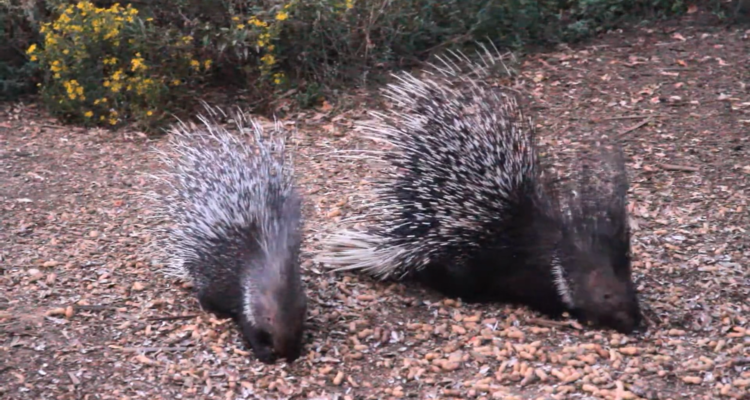The spiky creatures are running wild at the nuclear site, threatening employees’ safety and damaging the infrastructure of the facility.
By World Israel News Staff
According to staff and scientists at Israel’s nuclear research facility near Dimona in the Negev desert, it’s neither the Islamic Republic of Iran nor terror groups Hezbollah and Hamas that pose the biggest threat to the site.
Rather, that dubious honor goes to desert porcupines.
These spiky creatures have descended upon the nuclear facility and its surroundings , wreaking havoc on everything from gardens to water pipes and posing a risk to the safety of employees at the site as well as to its physical infrastructure.
“Porcupines are opportunistic,” ecologist Zahava Sigal told Ynet. “They take advantage of any opportunity and are not shy.”
According to Sigal, once a handful of porcupines understood that the nuclear research site was the ideal place to settle, scores of others followed suit.
“Porcupines need ground suitable for them to dig through and plenty of water. As soon as some realized the Negev facility provided them with a sort of haven – a safe place from predators, protection from the elements and an abundance of food – their numbers grew.”
Orit and David, two employees of the research facility identified only by their first names, pleaded with administrators to step up porcupine removal efforts in an open letter obtained by Ynet.
“We’ve been fighting them for years but getting nowhere. They are creating holes in the lawn in order to reach roots and build burrows,” the pair wrote.
“They are undetectable from above and a risk to passers-by,” they said, referencing a gardener at the site who was physically injured after encountering a porcupine.
“We no longer plant flowers on campus because they destroy them, as they do to the young palm trees we’ve planted. They also damage our water pipes,” the letter continued, noting that the porcupines have incredibly strong, razor-sharp teeth.
But authorities have dragged their feet on taking measures to control the site’s porcupine population because the territorial creatures would likely die if relocated elsewhere.
“We must map the homes of the porcupines and then remove it whole to a new location,” Sigal said. She acknowledged that many would not survive the move.
“This will likely be fatal to most and is not a good solution ecologically, but there is no other option.”





